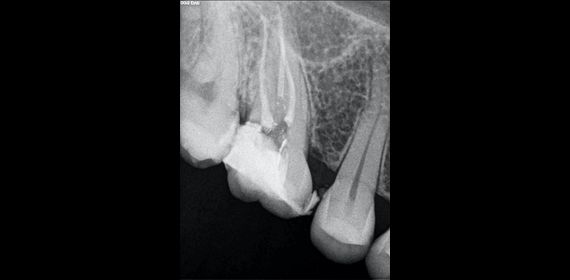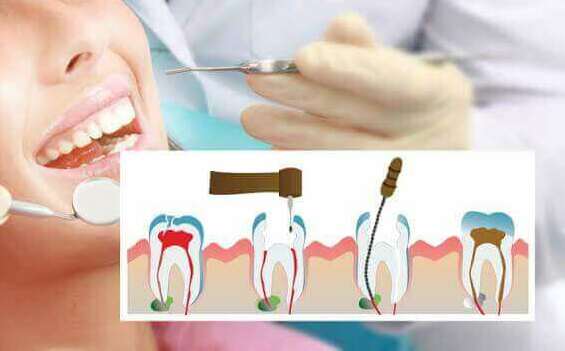Endodontics
Root Canal Treatment

The Internal Tooth Structure
-
- The tooth internally is made up of a network nerves and blood pessels
- At the center of your tooth is he Pulp. The pulp is a collection of blood vessels that helps to build the surrounding tooth.
- If these nerves, blood vessels or pulp tissue get damaged because of Decay, Infection or Trauma your tooth will need Root Canal.
- A Root Canal is one of the most common dental procedures performed routinely to save you teeth and prevent the need for dental implants or bridges.
Root Canal treatment in pune for complex procedures! You need an Endodontist to treat your Root Canal. Get the best Root Canal Treatment from Dr. Shail Jaggi the best Endodontist in pune for highly skilled root canal in Pune city.
An Endodontist is a Trained and Certified Root Canal Specialist.
An Endodontists has an additional 3 years of training only handling Root Canal Treatment and associated complications and failures to successfully rehabilitate the tooth again instead of extracting it
Root Canal Treatment is a complicated and precision based treatment that need to be handled with extreme care and caution to assure the longevity of the treated tooth and long term success
Root Canal Treatment also need highly advanced equipment to make sure there is no failure of treatment at a later date
IS A ROOT CANAL PAINFUL ?

One of its kind dedicated Root Canal Centre makes Use Advanced Equipment and
Techniques that will make your experience painless and pleasant
Root Canal treatment is PAINLESS AT DENTALWIZ - ROOT CANAL SPECIALISATION CENTRE
Whats Special About your Root Canals at Dentalwiz
-
- Handled by a Team of Trained and Certified Endodontists with 25 years of experience (Root Canal Specialists )
- All Root Canals Done Under the Microscope with Precision and Perfection
- Advanced Equipment dedicated to Painless Treatment
- Complete COVID Protection and Care during Root Canal

What to Expect During Your Root Canal Treatment



-
- A good set of xrays is important to see the internal structure of the tooth
- And to identify the complexity of the tooth
1) Preparation: As a basic start up protocol we use a special motor that is manufactured specifically for root canal preparation thereby eliminating the chances of failure and transmitting a very minimal force to the tooth ,making it painless !


2) Measurement: The success of root canal treatment depends on the length evaluation of the roots . Our office uses the best known apex locater in the world for evaluating the exact length of your roots ,so that the roots are completely cleaned out and nothing is left behind to cause the tooth to get re-infected
3) Disinfection and Irrigation: Advanced Cleaning and Irrigation devices to clean complex internal structure of the tooth for successful Root Canal Treatment
It is during the cleaning that all the micro-organisms are flushed out and the canal is completely disinfected. For this we use ultrasonic cleaning of the canals with special tips to make sure we leave nothing behind before we seal the canals


4) Advanced 3D Filling Devices For the Perfect Root canal Filling: Cleaning out the prepared tooth is an essential step to mark the success of treatment .
Painless Anesthetic Equipment and Technnique ensures you have absolutely no pain during and after your treatment


In our office we like to execute our work to perfection which why we have advanced techniques for Root Canal Treatment making the whole treatment totally painless and extremely precise
We use the Rubber Dam for Isolation, It is the Safest way to do your Root Canal Treatment
Using advanced equipment makes it simple for us to complete all our root canals for most patients in two sitting and also in single sitting if required in cases of emergency.
Large Overhead screen to watch your dental work or just chill with a movie

Endodontic Retreatment
With the appropriate care, your teeth that have had endodontic treatment may last as long as other natural teeth. However, a tooth that has received treatment may fail to heal or pain may continue to exist. Sometimes, the pain may occur months or years after treatment. If so, Endodontic Retreatment may be needed.

Improper healing may be caused by:
-
- A canal that went untreated in the initial root canal, which may be due to calcification or the canal being curved or narrow.
- The crown or restoration was not placed within the appropriate amount of time following the procedure.
- The crown or restoration is not properly sealed and therefore is not preventing saliva from contaminating the inside of the tooth.
In some cases, new problems can influence a tooth that was successfully treated:
-
- New decay can expose a root canal filling material, causing infection.
- A cracked or loose filling or crown can expose the tooth to new infection.

Once retreatment has been selected as a solution we will reopen your tooth to gain access to hold the root canal material. This restorative material will be removed to enable access to the root canal. The endodontist will now clean your canals and carefully examine the inside of the problematic tooth. Once cleaned, the endodontist will fill and seal the canals and place a permanent filling, unless otherwise instructed by your general dentist. If the endodontist places a temporary filling in your tooth, you will need to return to your general dentist’s office as soon as possible to have a permanent restoration placed on the tooth in order to restore it full functionality.

Endodontic Surgery
Why would I need Endodontic Surgery?
Generally, a root canal is all that is needed to save a tooth with injured pulp. Occasionally, this non-surgical procedure will not be sufficient to heal the tooth and your endodontist will recommend surgery. Endodontic surgery can be used to locate fractures or Surgery may also be needed to remove calcium deposits in root canals, or to treat damaged root surfaces or the surrounding bone of the tooth. There are two types of endodontic surgeries performed in our office, an apicoectomy, which is the most common, and a root amputation.

What is an Apicoectomy?
An apicoectomy is occasionally needed when inflammation or infection persists in the bony area around the end of your tooth after a root canal procedure. In this microsurgical procedure, the endodontist opens the gum tissue near the tooth to see the underlying bone and to remove any inflamed or infected tissue. The very end of the root is also removed. A small filling is placed to seal the end of the root canal and a few stitches or sutures are placed to help the tissue heal. Over a period of months, the bone heals around the end of the root.
What is a root amputation?
Another type of endodontic surgery, is a root amputation. This is a specialized dental procedure, whereby one root is removed from a multi-root tooth
The tooth is then stabilized and rendered fully functional with a crown. The multi-root teeth
best suited
to the root amputation procedure are the molars at the back of the mouth. The general purpose of the root
amputation is to save an injured or diseased tooth from extraction.
Following either of these procedures, there may be some discomfort or slight swelling while the incision
heals. This is normal for any surgical procedure.







